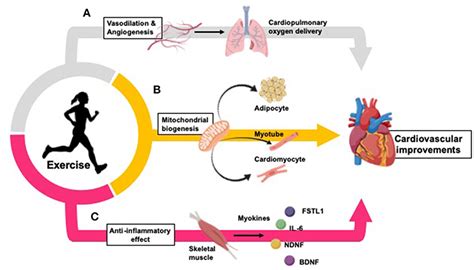Resistance Exercise and Its Effects on Cardiovascular Disease and Risk Factors
Evidence suggests that resistance training is associated with a lower risk of all-cause mortality and coronary vascular disease (CVD) morbidity and mortality. In this article, Dr. Paul Henning investigates the connection between resistance training and cardiovascular health.More

Epidemiological evidence suggests that resistance training is associated with a lower risk of all-cause mortality and coronary vascular disease (CVD) morbidity and mortality(1).
When compared with adults who do not participate in resistance training, those who resistance train regularly have approximately 15% lower risk of all-cause mortality and 17% lower risk of CVD.
Only about 30-60 minutes a week of resistance training is associated with the maximum risk reduction for all-cause mortality and incident CVD(1).
This is a small price to pay for a big pay-off.
Due to the growing evidence supporting the use of resistance training to combat CVD, a recent update was made to the previous American heart Association 2007 scientific statement. Despite the well-documented benefits, only 28% of U.S. adults report participating in 2 days per week of resistance exercise.
Resistance training and traditional CVD risk factors
In the following sections, I will summarize and provide bullet points of key scientific findings of both traditional and nontraditional CVD risk factors that are enhanced from resistance training.
The evidence for CVD risk factors is based largely on randomized controlled trials of medium length (2–6 months) with very few studies conducted >6 months. Most trials implemented programs of moderate- to high-intensity (40%–80% of maximum effort) resistance training on 2 to 3 days per week.
Resistance training and resting blood pressure
- Resistance training reduced resting blood pressure in healthy adults and in those with prehypertension, hypertension, and elevated cardiometabolic risk(2).
- Proposed mechanisms responsible for these benefits are enhancements in endothelial function, vasodilatory capacity, and vascular conductance(3).
- The benefits of resistance training are more pronounced in those with prehypertension and hypertension compared with normotensive individuals.
- Evidence indicates that the decreases in resting systolic blood pressure are similar when comparing resistance training with anti-hypertensive medications(4).
Resistance training and glycemia
- Resistance training enhances glycemia and insulin resistance across varied populations(2).
- Proposed beneficial mechanisms of resistance training include enhanced insulin sensitivity, increased GLUT4 translocation in skeletal muscle, and increased energy expenditure both during and after exercise.
- Observational studies indicate that regular resistance training is associated with a 17% lower incidence of diabetes compared with no resistance training(1).
Resistance training and lipid profiles
- There is a modest, but favorable effect of resistance training on total cholesterol, triglycerides, and high-density lipoprotein cholesterol (HDL)(2).
Resistance training, body composition, and weight
- Resistance training appears to have a beneficial effect on lean body mass and fat mass. In populations characterized as overweight or obese, resistance training alone is associated with increased lean body mass, decreased body fat percentage, and decreased whole-body fat mass compared with non-training controls.
- Resistance training enhances body composition by reducing body fat stores, increasing, or maintaining muscle mass, and enhancing resting metabolic rate, thus it may attenuate weight gain over time.
In summary, both historic and recent evidence indicates that resistance training has significant and favorable effects on traditional CVD risk factors, including resting blood pressure, glycemia, lipids and lipoproteins, and body composition.
Benefits tend to be greater in older adults and those with elevated cardiometabolic risk factors.
Resistance training and nontraditional CVD risk factors
Recent evidence has identified potential mechanisms, beyond the favorable effect on conventional CVD risk factors as mentioned above, by which resistance training may reduce the risk of CVD.
- Cardiorespiratory fitness: Resistance training appears to confer small to moderate beneficial increases in cardiorespiratory fitness through mechanisms such as increased leg strength, improvements in oxidative enzymes, and increased type II muscle fibers.
- Arterial stiffness: Low-intensity to moderate-intensity resistance training is favorably associated with lower central and peripheral pulse weave velocity.
- Inflammation c-reactive protein (CRP): Resistance training lowers CRP in normal adults and in adults with elevated cardiometabolic risk, thus indicating a decrease in systemic inflammation.
- Fibrinolysis and coagulation: Resistance exercise of higher volume and intensity is associated with a greater fibrinolytic response and platelet activity. A single resistance training session is patients with coronary artery disease was associated with improvements in the fibrinolytic response without elevating potential thrombotic markers.
- Endothelial function: Improvements of ≈2%–3% (flow-mediated dilation) in adults with and without cardiometabolic conditions.
- Depression and anxiety: Moderate effect sizes in reduction in depressive symptoms and anxiety.
- Quality of life: Positive effect on both mental and physical health related quality of life measures.
- Sleep: Moderate-effect sizes in better sleep outcomes, with the strongest beneficial associations for sleep quality.
Resistance vs aerobic vs combined training and CVD risk factors
Is there a certain type of exercise that is most effective for preventing CVD?
Several large observational studies suggest that, although no statistically significant differences were found between resistance exercise vs aerobic training alone, combining resistance and aerobic training (combination training) resulted in slightly larger reductions in some CVD risk factors, including obesity, diabetes, and hypercholesterolemia.
Combination training appears to have stronger associations than either aerobic or resistance training alone with all-cause and CVD mortality(1).
Resistance training prescription for CVD
The figure below indicates the general guidelines for resistance training in apparently healthy adults and clinical populations. It also included contraindications to resistance training.
Figure: Resistance training prescription components. Muscular strength is the ability of a muscle to generate force, and muscular endurance is the ability of a muscle to perform repeated contractions or maintain a contraction for a prolonged period. Lower repetitions (reps) with a heavier weight may better optimize muscular strength. Higher repetitions with a lighter weight may better enhance muscular endurance. Using weight loads that permit 8 to 12 repetitions, in general, will facilitate improvements in both muscular strength and endurance, provide cardiovascular health benefits, and be safe for the general population. Contraindications to resistance training. Before initiating an resistance training program, patients should consult with a physician for absolute and relative contraindications. METS indicates metabolic equivalents of task; 1-RM, 1-repetition maximum(5).
Resistance training can include free weights (i.e., dumbbells, barbells), body weight (i.e., push-ups, squats), machine weights, and resistance bands.
For healthy adults, regimens of 8 to 10 different exercises involving major muscle groups, each exercise performed in 1 to 3 sets of moderate-intensity loads that permits 8 to 12 repetitions per set to volitional fatigue, ≥2 times per week, is effective for achieving muscular and cardiovascular benefits.
For clinical populations, modifications to lower intensity loads with higher repetitions can minimize risk while still providing health benefits.
Body weight training can be as effective as training with weight machines or free weights.
Progression
Initial intensity upon beginning a new resistance training program should correspond to 40% to 60% of 1-RM, then gradually increasing the resistance, number of sets, or frequency of training over time. This is known as progressive overload and is paramount to maintenance or continued improvements in muscle adaptation and strength over time.
The “2 for 2” rule can be applied: when an individual can achieve 2 more repetitions of a given exercise in 2 consecutive resistance training sessions, weight can be increased 2% to 10%(6).
After 6 months of regular resistance training, individuals free from contraindications can use a wider range of repetitions and heavier weights (i.e., >80% 1-RM), with longer rest intervals between sets of exercises. Programs should be periodized, meaning that the resistance training program undulates intensities and volumes to maximize gains and help avoid injury(6).
Summary
Evidence describing the benefits of resistance training on traditional and nontraditional CVD risk factors has grown substantially since the 2007 American Heart Association scientific statement. Resistance training programs need not be time-consuming to be efficacious, requiring only 30 to 60 minutes per week (see figure below).
Figure: Summary of resistance exercise training.
In general, a single set of 8 to 12 repetitions to volitional fatigue, using moderate weight loads of 40% to 60% of 1-RM, for 8 to 10 different exercises involving major muscle groups, performed twice per week are highly effective.
Evidence clearly demonstrates that resistance training is a safe, effective, and essential component of the overall physical activity regimen for CVD risk reduction.
If you're looking to improve your cardiovascular health, CoQ10 is an essential compound that helps your body fight disease and damage on a cellular level.
It's a key contributor to heart, lung, and reproductive health.CoQ10 is commonly supplemented to help improve diseases that involve mitochondrial dysfunction and increased oxidative stress such as fibromyalgia, chronic fatigue syndrome, and diabetes.Now you can support your body's cellular health and maximize protection from oxidative damage with the optimal delivery system that is CoQ10 Liposomal.
References 1. Momma H, Kawakami R, Honda T, et al: Muscle-strengthening activities are associated with lower risk and mortality in major non-communicable diseases: a systematic review and meta-analysis of cohort studies. Br J Sports Med 56:755-763, 2022 2. Ashton RE, Tew GA, Aning JJ, et al: Effects of short-term, medium-term and long-term resistance exercise training on cardiometabolic health outcomes in adults: systematic review with meta-analysis. Br J Sports Med 54:341-348, 2020 3. Fecchio RY, Brito LC, Pecanha T, et al: Potential Mechanisms Behind the Blood Pressure-Lowering Effect of Dynamic Resistance Training. Curr Hypertens Rep 23:35, 2021 4. Naci H, Salcher-Konrad M, Dias S, et al: How does exercise treatment compare with antihypertensive medications? A network meta-analysis of 391 randomised controlled trials assessing exercise and medication effects on systolic blood pressure. Br J Sports Med 53:859-869, 2019 5. Paluch AE, Boyer WR, Franklin BA, et al: Resistance Exercise Training in Individuals With and Without Cardiovascular Disease: 2023 Update: A Scientific Statement From the American Heart Association. Circulation, 2023 6. Medicine ACoS: American College of Sports Medicine position stand. Progression models in resistance train-ing for healthy adults. Med Sci Sports Exerc. 41:687–708, 2009

 mainadmin
mainadmin 










